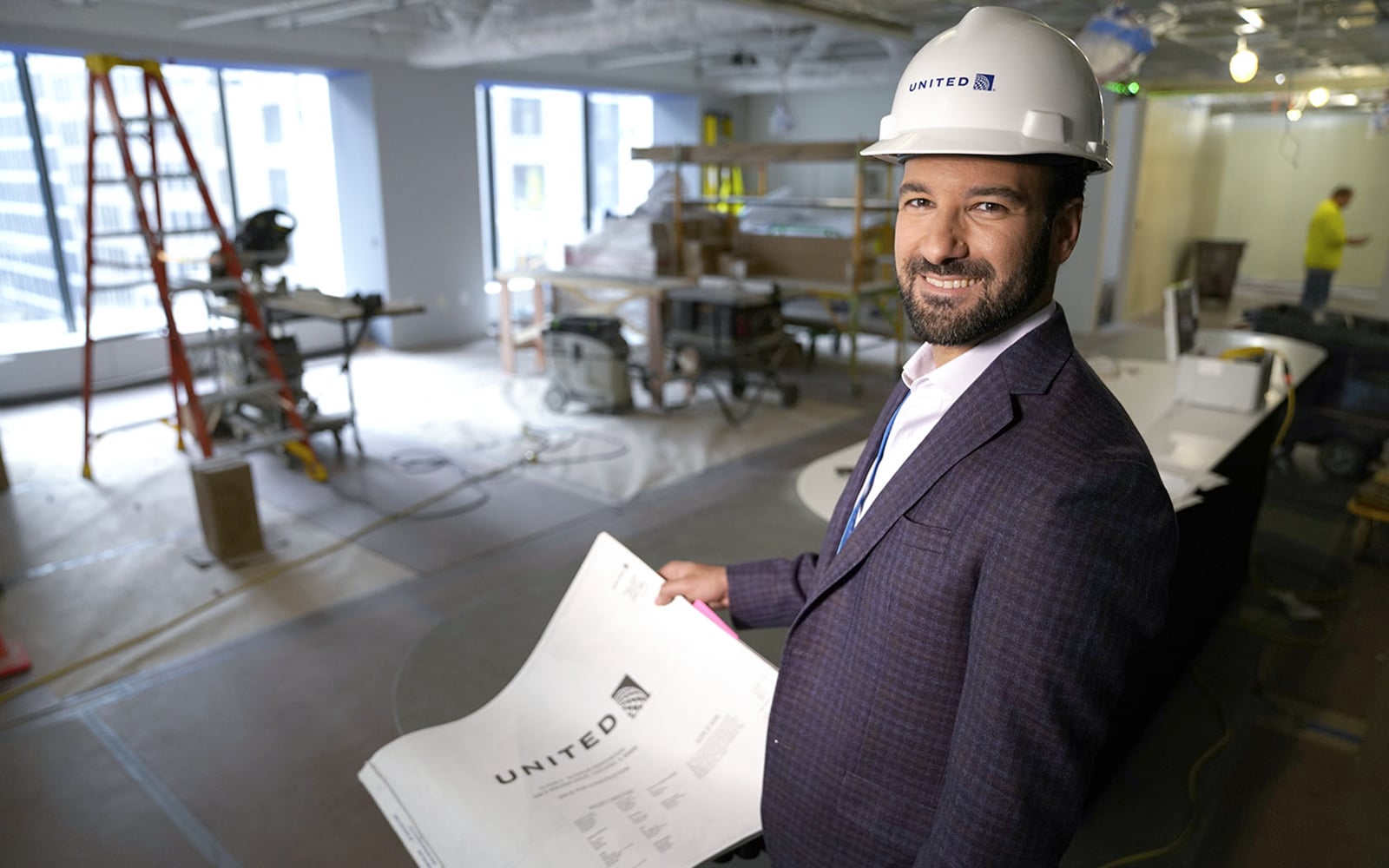|
|
The COVID-19 pandemic hit the airline industry hard. Like its major competitors, United Airlines saw revenues plummet as business and vacation travel grinded to a halt. But unlike its competitors, United refused to retreat. With its fleet, employees, and pilots intact, the company was ready for a rebound when travel resumed. In the summer of 2021, United made a bold move by announcing United Next—a plan to add 500 additional planes by the end of 2026.
Kaveh Dabiran is United Airlines’ director of corporate real estate planning and development. He came to the industry from the consulting world in 2018 and now oversees a team responsible for planning, design, and construction in a region that includes San Francisco (SFO), Los Angeles (LAX), and domestic and international line stations.

Dabiran was born in Texas and raised in Michigan. He earned an undergraduate degree in mechanical engineering from the University of Michigan, started his career as a project controls engineer, and spent nearly a decade advising clients at PMA Consultants where he worked closely with various airlines.
The planning and development arm of the airline executes projects to support United Airlines’ strategic goals, and now, Dabiran is pivoting to support United Next. “As a company, we are entering a new phase of organizational maturity and leveraging our resources and influence to drive a meaningful and positive impact on our communities, customers, and the environment,” he says. “We’re confident that if we deliver the right facilities, continue to provide unprecedented connectivity via our route network, support our teams, and offer up a world class customer experience, we will definitely get ahead.”
United Next is the airline’s daring bet that demand for travel will soon increase in a post-pandemic environment. The difficult events of the past two years forced airline executives to rethink structures, partnerships, and objectives. “We had to take a hard look at how we make investments as a company, and continue to strengthen our relationships with airports and municipalities to bring this industry back to pre-pandemic levels,” Dabiran says.
His teams’ primary focus is on transparency and open communication with its internal and external customers to uncover mutually beneficial projects. United Next will increase passenger travel to many destinations, stimulate local economies, and introduce about 25,000 new jobs nationwide.

After United placed one of the largest aircraft orders in its history, Dabiran and his counterparts across the entire organization put new plans into place. “Our real estate footprint is critical to enabling the level of growth required to meet our growth targets. Supporting United Next will require all United stakeholders to be seated at the table to be able to collectively better understand the real estate needs across the network.”
At LAX, Dabiran’s team completed a $350 million aircraft hangar and ground service equipment maintenance facility, consolidating two east and west maintenance centers once separated by more than a mile. The massive twin-widebody technical operations center can accommodate multiple aircrafts and is located behind Terminals 7 and 8, which recently received a $573 million renovation.
The state-of-the-art facility employs 500 full-time workers who together perform needed maintenance on buses, tractors, aircraft, and other equipment. Dabiran’s superstar team of project managers navigated site lockdowns, delays, supply chain issues, and remote-working challenges to deliver the project on time.
“Our internal stakeholders, aircraft mechanic, and experienced subcontractors worked together to bring this project over the finish line,” Dabiran says. “Large airline projects are difficult in any environment and the pandemic has made partnerships more important. We had a solid team of tradesmen who showed up to the jobsite daily in the heart of the pandemic and worked tirelessly to help land this project.”
Still, managing these projects in the “new normal” requires an adjustment, and Dabiran knows expectations are shifting. “We have to change as leaders because those we lead are changing,” he explains. Today’s multigenerational workforce values flexibility, inclusion, freedom, and purpose. Dabiran meets those expectations by creating collaborative environments and empowering those working under him to drive projects from inception to ribbon cutting.
While delivery continues to be a top priority, Dabiran’s teams operate in a more agile manner than they once were. He values collaboration, authenticity, and empathy when working thorough challenges as a team. Leadership, he says, requires listening first. “Listen, learn, lead,” he says. “That’s the right order for the teams we want to build here.”
As United Airlines moves United Next and its other initiatives forward, the company is also aligning itself with larger industry trends. “We want to get out ahead on all fronts. There have been difficulties in the industry, but we know we can uncover the opportunities to lead the industry as we rebuild and move on to what’s next,” Dabiran says.
Although most travel has resumed, industry insiders expect some turbulence ahead and say 2019 traffic may not return until at least 2024. When passengers do come back at larger volumes, pent-up demand may cause delays for some airlines—but a strong planning and development team at United has the leading airline ready to fly.


